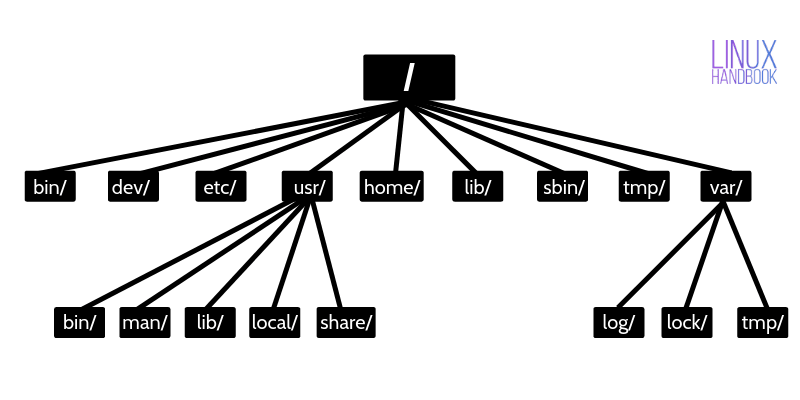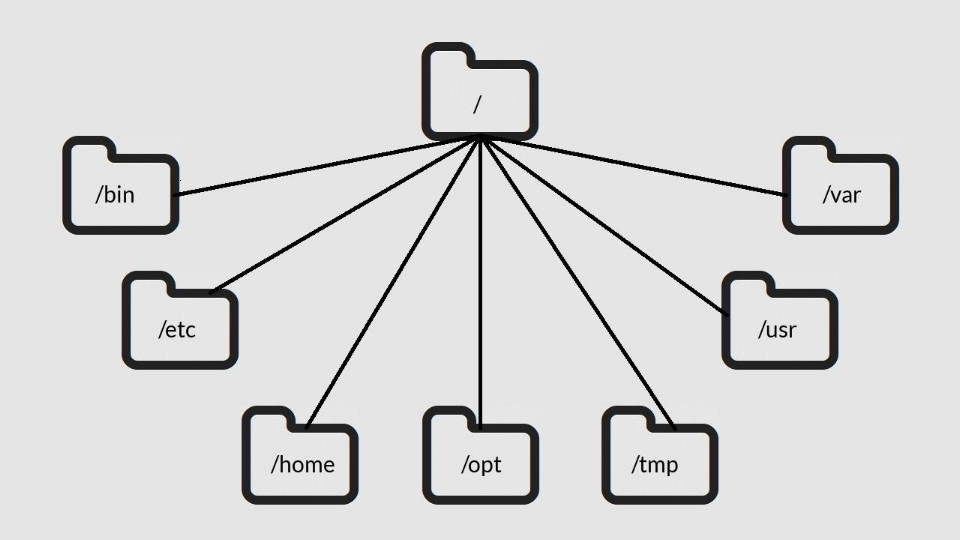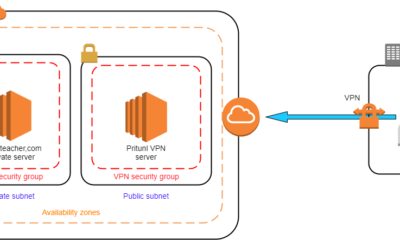Linux
Linux Directory Structure Explained: Unlocking /Etc, /Var, /Home
When you first dive into the world of Linux, the directory structure can seem like a maze. You see folders named /etc, /var, /home, and wonder what they all mean.
Understanding these directories is crucial for navigating and mastering Linux. Imagine knowing exactly where to find configuration files, where your system logs are stored, or how to access your personal files. This knowledge gives you control, saving you time and frustration.
You’ll learn the purpose of each key directory and how they fit into the bigger picture of your Linux system. Get ready to simplify your Linux experience and boost your confidence.

Credit: linuxhandbook.com
Linux Directory Basics
Understanding the Linux directory structure is essential for users. It’s like a roadmap to navigate the system. Each directory serves a specific function and holds vital files. This structure is organized and efficient, making it easy to find what you need.
Purpose Of Directories
Directories in Linux have specific roles. The /etc directory stores configuration files. These files help in setting up system settings. The /var directory contains variable data files. This includes logs and other files that change over time. The /home directory is where user files are kept. Every user gets a personal space here.
Hierarchy Overview
The Linux directory structure is hierarchical. The root directory is at the top, denoted by /. Below it, directories branch out like a tree. This hierarchy helps in organizing files systematically. Each subdirectory has its own purpose. For example, /bin holds executable files. /sbin contains system binaries.
This logical arrangement makes file management efficient. Users can easily locate files based on their directory paths. Understanding this hierarchy is crucial for system navigation. It simplifies user interactions with the Linux system.

Credit: www.linuxtrainingacademy.com
/etc Directory Insights
The Linux directory structure is a fascinating web of organized chaos, each folder serving a distinct purpose. Among these, the /etc directory stands as a cornerstone for system configuration. Understanding its contents can empower you to fine-tune your Linux experience with precision. Let’s dive into the /etc directory and unravel its mysteries.
Configuration Files
At the heart of the /etc directory are configuration files that dictate how your system behaves. These files are like the DNA of your Linux setup, defining everything from network settings to user profiles.
Consider the /etc/passwd file, which stores essential user information. It’s not just a list of usernames; it’s a key component in managing user access. By editing these files, you can customize your system to suit your needs.
Have you ever tweaked your system settings and wondered where those changes are stored? They’re likely nestled within the /etc directory. It’s where you can add new configurations or modify existing ones to reflect your preferences.
Managing System Settings
Managing system settings through the /etc directory is like being the director of a grand orchestra. Each file plays a role, and your task is to ensure they harmonize perfectly.
Take the /etc/fstab file, for instance. It’s crucial for mounting file systems at boot. By altering this file, you control which partitions are accessible, influencing how data flows within your system.
Is your network acting up? The /etc/network/interfaces file can be your savior, allowing you to adjust configurations and troubleshoot connectivity issues. Knowing which file to edit can save you time and frustration.
Security Considerations
Security within the /etc directory is paramount. These files contain sensitive information that, if mishandled, could compromise your system’s integrity.
Access control is your first line of defense. Ensure files like /etc/shadow, which stores password hashes, are protected with strict permissions. Only authorized users should have access to these critical files.
Have you thought about the implications of an unsecured /etc directory? Unauthorized changes can lead to system vulnerabilities. Regular audits and backups can help mitigate risks, keeping your system secure and stable.
Understanding the /etc directory not only enhances your Linux proficiency but also empowers you to manage your system effectively. Next time you navigate through these files, consider the impact they have on your digital environment. Are you ready to explore further and harness the power of Linux?
/var Directory Explained
Understanding the Linux directory structure is key to mastering system management, and one important directory is the /var directory. This directory is often described as the workhorse of the Linux filesystem, as it holds dynamic data that changes frequently. From logs to databases, /var stores crucial information that keeps your system running smoothly.
Dynamic Data Storage
The /var directory is designed to store data that changes as the system operates. This includes caches, print queues, and temporary files. When you install new software, /var often expands to accommodate the new data.
Think of it as the dynamic playground of your Linux system. It’s where the action happens. If you’ve ever wondered why your disk usage suddenly spikes, /var might be the culprit.
Log Files Importance
Log files within /var/log offer a detailed history of system activities. They record everything from system boot messages to application-specific logs. This information is invaluable for troubleshooting issues and understanding system behavior.
Have you ever experienced a system crash and felt helpless? Checking log files in /var/log can provide clues about what went wrong. Regularly monitoring these logs can also preemptively alert you to potential problems.
Database Files
The /var directory often contains database files that require frequent updates. This includes data for applications like MySQL or PostgreSQL. Proper management of these files is crucial to ensure data integrity and performance.
Imagine running an online store; your product information and customer orders might reside in these databases. Efficient handling of /var ensures your business runs smoothly and data remains consistent.
Is your system’s performance lagging? It might be time to check your /var directory. Paying attention to what’s stored here can reveal insights into how to optimize your Linux environment for better efficiency and reliability.
/home Directory Significance
Understanding the importance of the /home directory can elevate your Linux user experience. This directory serves as the personal space for each user on the system. It holds files, settings, and data that reflect individual preferences and needs. Imagine having a digital space that adjusts to your personal touch every time you log in. That’s the essence of the /home directory.
User Data Storage
Think of the /home directory as your personal vault for storing files. This includes documents, music, videos, and any other data you want to keep safe. You don’t have to worry about cluttering shared spaces or losing files during system updates. Everything is contained within your user-specific folder, making organization a breeze. Have you ever wished for more control over your digital life? The /home directory offers just that.
Personal Configuration
Your Linux environment can be as unique as you are. Inside the /home directory, you find configuration files that customize your user experience. From desktop layouts to application settings, these files store your personal preferences. This means every time you log in, your workspace feels like home. Isn’t it comforting to know your system remembers exactly how you like it?
Access Permissions
In Linux, the /home directory ensures your privacy and security. Each user has access to their own directory, protected by access permissions. These permissions control who can read, write, or execute files within your space. This is crucial in multi-user environments, safeguarding against unauthorized access. Are you aware of who can access your files? The /home directory empowers you to manage this effectively.
Embrace the significance of your /home directory. It offers a personalized, secure, and organized digital environment tailored to your needs. By understanding its role, you can enhance your Linux experience significantly.
Navigating The File System
Understanding the Linux directory structure is like learning a new map. It helps you find files and navigate the system easily. Each directory has a specific purpose. Knowing what these directories do can improve your Linux experience.
Basic Commands
Start with the ls command to list directory contents. Use cd to change directories. Want to know where you are? Type pwd to print the working directory. To see hidden files, type ls -a. These commands are essential for navigation.
Common Tools
File managers like Nautilus or Dolphin help you visually navigate. They offer a graphical interface to explore directories. For text-based navigation, mc (Midnight Commander) is a powerful tool. It provides an easy-to-use interface in the terminal. Use search tools like find or locate to quickly locate files. These tools make navigating the Linux file system easier.

Credit: www.youtube.com
Best Practices For Directory Management
Managing directories in Linux requires careful planning and organization. Proper directory management ensures a smooth and efficient system. It also helps avoid clutter and confusion in the file system. Following best practices can improve system performance and security. Let’s delve into key aspects of directory management.
Organizing Files
Organize files logically within directories. Use clear and descriptive names. Group similar files together for easy access. Create subdirectories to further categorize files. Regularly clean up unused or outdated files. This keeps the system tidy and efficient.
Backup Strategies
Regularly backup important directories. Use automated tools for backups. Store backups in a secure location. Consider offsite storage for critical files. Verify backup integrity periodically. This ensures data recovery in case of failure.
Security Measures
Implement strong security practices for directories. Limit access to sensitive directories. Use permissions to control who can view or edit files. Monitor directory access logs for unusual activity. Regularly update security settings to protect against threats. This safeguards data from unauthorized access.
Frequently Asked Questions
What Is The Linux Directory Structure Explained?
The Linux directory structure organizes files in a hierarchical layout. It starts with the root directory, “/”. Key directories include “/bin” for binaries, “/etc” for configuration files, “/home” for user data, and “/var” for variable files. This structure ensures efficient file management and system functionality.
What Is The Directory Entry Structure In Linux?
The directory entry structure in Linux contains inode numbers and filename information. It links files to their inodes. Each entry has metadata like permissions and timestamps. This structure helps locate files efficiently within the filesystem. It plays a crucial role in file management and retrieval.
What Is A Var Directory In Linux?
The var directory in Linux stores variable data files. It includes logs, caches, and temporary files. System processes and applications frequently update files here. This directory helps manage data that changes over time. Proper maintenance of the var directory ensures efficient system performance.
What Are The Symbols Of Directory In Linux?
Linux directory symbols include a forward slash (/) for root directory and dot (. ) For current directory. Double dots (. . ) indicate the parent directory. Use tilde (~) for the home directory. These symbols help navigate and manage files efficiently in the Linux environment.
Conclusion
Understanding the Linux directory structure is crucial. It helps in system management. Each directory has a specific role. For example, /etc stores configuration files. /var holds variable data. /home is where user files reside. This knowledge aids in efficient troubleshooting.
It also enhances system organization. Beginners and experts alike benefit from this understanding. Navigating Linux becomes easier. You gain better control over your system. So, take time to explore these directories. Familiarity with them boosts your confidence. It makes using Linux more rewarding.
Keep learning and exploring. The more you know, the smoother your experience.
-

 DevOps6 years ago
DevOps6 years agoSaltstack Tutorial for beginners [2025]
-

 DevOps6 years ago
DevOps6 years agoHow to build a Docker cron job Container easily [2025]
-

 Linux7 years ago
Linux7 years agomail Command in Linux/Unix with 10+ Examples [2025]
-

 DevOps6 years ago
DevOps6 years agoDocker ADD vs COPY vs VOLUME – [2025]
-

 DevOps6 years ago
DevOps6 years agoHow to setup Pritunl VPN on AWS to Access Servers
-

 Linux7 years ago
Linux7 years agoGrep Command In Unix/Linux with 25+ Examples [2025]
-

 Linux7 years ago
Linux7 years agoFind command in Unix/Linux with 30+ Examples [2025]
-
Linux5 years ago
How To setup Django with Postgres, Nginx, and Gunicorn on Ubuntu 20.04

